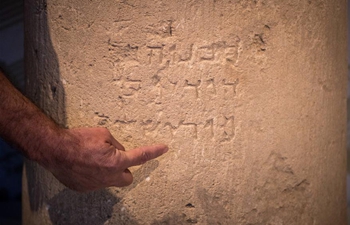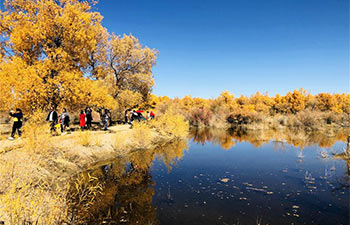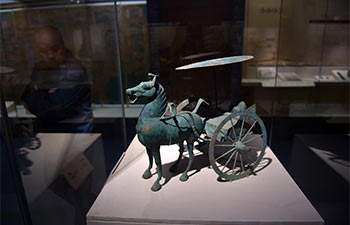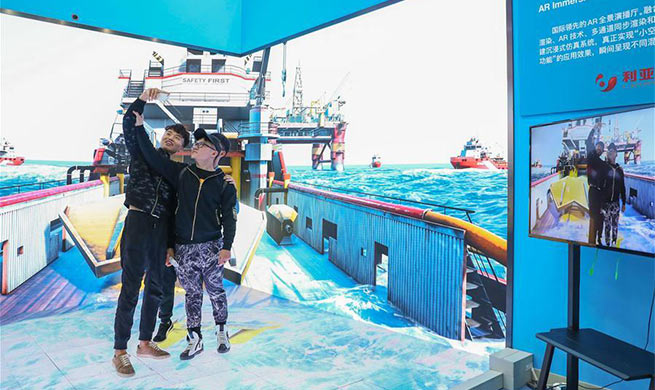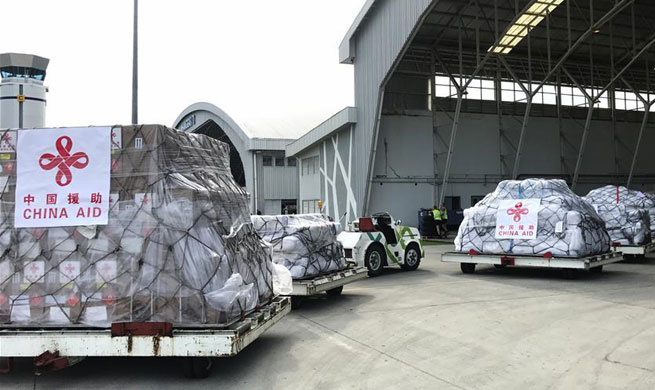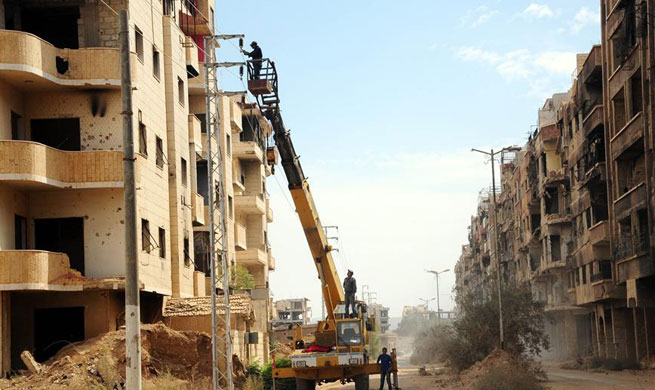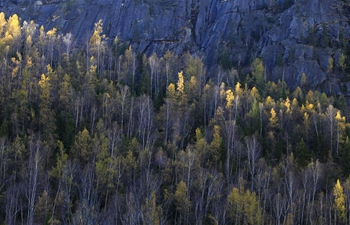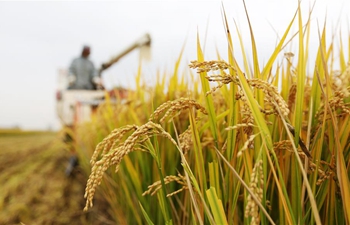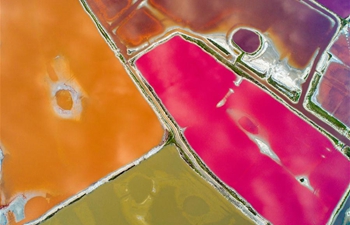BEIJING, Oct. 10 (Xinhua) -- As the first ray of sunshine reaches Donggou Village in Beijing's Miyun District, Yang Chenghai and his fellow villagers walk behind 14 mules, each laden with bricks, and make their way up a hillside section of the Great Wall.
Meandering on mountain ridges across north China, the Great Wall, one of the world's great wonders, was built between the 3rd century BC and the Ming Dynasty (1368-1644). The existing sections mostly date from the Ming Dynasty (1368-1644), with the Ming wall measuring over 8,800 kilometers. Preservation faces long-term challenges.
Since the start of this year, the renovation of a 1,000-meter section of the Great Wall in the north of Yang's village has started. Since the mountain paths are so steep, animals are the only way to get bricks to the top.
A mule can only carry 12 wall bricks at a time, which are more than 10 kilograms each. Yang, 54, supports himself with a thick tree branch, following the mules on a path full of fragmented rocks, mud and animal feces.
To better preserve the historical and cultural values, the bricks are made based on their original format, material and craftsmanship.
After nearly an hour's walk, a section of the Great Wall suddenly came into sight, along with workers laying bricks. Some parts are overgrown with weeds, and some have already collapsed.
According to the Great Wall survey, the remaining Great Wall sections in Beijing are 573 km long, of which 526 km are from the Ming Dynasty.
Zheng Baoyong, head of the heritage management office of Miyun District, said that Miyun is home to one-third of Beijing's Great Wall sections. Due to human destruction and natural weathering, some parts of the Great Wall are damaged or have collapsed, and they are in urgent need of renovation.
The Great Wall, a symbol of China, is not just one wall, but many interconnected walls. Sections of earlier fortifications were joined together to form a united defense system against invasions from the north. It was listed as a World Heritage Site by UNESCO in 1987.
In 2006, a regulation on Great Wall protection took effect. Repairs are difficult to complete, taking large amounts of manual labor and funding.
The bricks used for restoration are usually transported by vehicles to the foot of a mountain, and from there, mules bring them uphill. Workers have to carry the bricks by hand when a mule fails to climb up some of the steepest mountainsides. Sometimes, mooring ropes and slide rails are also needed.
"It is a very difficult and dangerous project. We have around 50 workers now. Every day, they start their work at 5:30 a.m. and do not stop until dark. It is hard to hire workers," said Zhang Baoru, who is in charge of the renovation project.
According to the Beijing Cultural Heritage Administration, the city government has invested a total of 374 million yuan (around 54 million U.S. dollars) on the renovation and protection of the Great Wall over the past 10 years.
"The Great Wall is a valuable historical and cultural heritage. Renovation is not easy, so more efforts should be made to better protect it," Xiu Haiqing, the village's party chief, said.
Yang grew up on the foot of the Great Wall. He and his mules have repeated the journey to transport bricks more than 10 times each day over the past several months.
"It is very hard, but I know it is a good thing to do," he said, letting the mules graze for a while before they go downhill to pick up more bricks.




